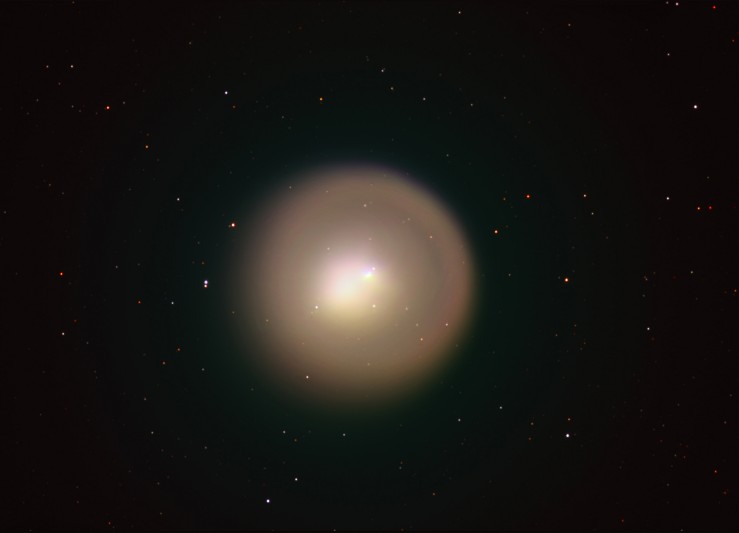Credit & Copyright: Don Goldman
Explanation:
Surprising Comet Holmes remains easily visible
as a round, fuzzy cloud in the northern constellation
Perseus.
Skywatchers with telescopes, binoculars, or those that
just decide to look up
can
enjoy the solar system's latest
prodigy as it glides
about 150 million kilometers from Earth, beyond the orbit of Mars.
Still expanding,
Holmes now appears to be about 1/3 the
size of the Full Moon, and many observers report a
yellowish tint to the dusty
coma.
A golden color does dominate this
telescopic view recorded on November 1,
showing variations across the coma's bright central region.
But where's the comet's tail?
Like any good
comet, Holmes'
tail would tend to point away from the Sun.
That direction is nearly along our line-of-sight behind the comet,
making its tail very difficult to see.
1999 2000 2001 2002 2003 2004 2005 2006 2007 2008 2009 2010 2011 2012 2013 2014 2015 2016 2017 2018 2019 2020 2021 2022 2023 2024 2025 |
Yanvar' Fevral' Mart Aprel' Mai Iyun' Iyul' Avgust Sentyabr' Oktyabr' Noyabr' Dekabr' |
NASA Web Site Statements, Warnings, and Disclaimers
NASA Official: Jay Norris. Specific rights apply.
A service of: LHEA at NASA / GSFC
& Michigan Tech. U.
|
Publikacii s klyuchevymi slovami:
comet Holmes - komety - koma
Publikacii so slovami: comet Holmes - komety - koma | |
Sm. takzhe:
Vse publikacii na tu zhe temu >> | |
